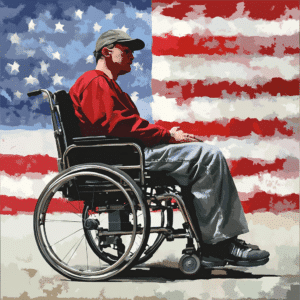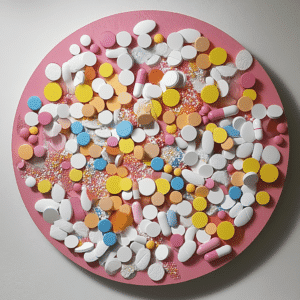The challenge of safeguarding our children from addiction can often seem overwhelming. However, by implementing effective strategies, we can create an environment that significantly reduces the risk of addiction. Here are some comprehensive parenting tips for addiction prevention to help you on this critical journey.
1. Foster Open Communication
Effective communication is critical in any healthy family. Regular conversations with your child about their thoughts, experiences, and feelings can create a trusting atmosphere. According to a 2023 study by the National Institute on Drug Abuse, teens who feel they can talk to their parents about problems are 30% less likely to turn to substances. Real examples of effective communication can be found in families documented by Unity Family Services. For instance, regular family dinners facilitated meaningful conversations and helped nip potential issues in the bud.
Creating a communicative environment means asking open-ended questions and actively listening. Avoid reacting harshly to their admissions; instead, focus on understanding and supporting them. Resources provided by the Huntingdon County Library can offer guidance on improving family communication.
2. Educate on the Dangers of Addiction
Knowledge is power, and educating your child about the risks and realities of addiction is crucial. Utilize resources from reputable organizations such as the Partnership to End Addiction or educational materials from schools that include parents in their awareness programs. Campaigns like ‘Above the Influence’ offer compelling and relatable content that resonates with teens, making the harsh realities of addiction clear.
Explain the specifics of addiction and how it can impact various aspects of life. Give real-world examples and statistics from credible sources to underline your points. The well-documented case of Amelia Earhart serves as an analogy for the importance of knowledge and preparation in overcoming seemingly insurmountable challenges.
| Tip | Description | Benefits |
| Open Communication | Encourage honest and open dialogue about the dangers of drugs and alcohol. | Builds trust, promotes awareness, and reduces secrecy. |
| Educate About Risks | Teach children about the physical, emotional, and legal consequences of drug use. | Increases knowledge, fosters informed decision-making. |
| Set Clear Expectations | Clearly express your family’s stance on drug and alcohol use. | Establishes boundaries, decreases likelihood of experimentation. |
| Monitor Activities | Keep track of your child’s whereabouts, activities, and friendships. | Reduces opportunities for drug use, promotes a safe environment. |
| Model Positive Behavior | Demonstrate healthy coping mechanisms and responsible behaviors. | Provides a strong example, reinforces positive habits. |
| Encourage Healthy Hobbies | Promote involvement in sports, arts, and other extracurricular activities. | Reduces idle time, fosters self-esteem, and discourages drug use. |
| Foster Strong Bonds | Build a supportive relationship through quality time and active parenting. | Enhances emotional support, increases resilience against peer pressure. |
| Teach Refusal Skills | Help children practice ways to say no to drugs and alcohol. | Empowers confidence, reduces susceptibility to peer pressure. |
| Educate About Mental Health | Discuss the importance of mental health and ways to seek help. | Promotes emotional well-being, reduces potential for self-medication. |
| Know the Signs | Learn the signs of substance abuse to detect issues early. | Enables early intervention, improves chances of successful outcomes. |
3. Encourage Healthy Coping Mechanisms
Many youths turn to substances as a way to cope with stress or emotional turmoil. Encouraging alternative coping methods such as physical activities or creative outlets can deter harmful behaviors. Olympian Simone Biles’s story highlights the profound impact of sports and arts on mental health and stress management.
Explore local community centers or schools offering drug-free Activities For teens. Promote hobbies and interests that build resilience and reduce anxiety, which are crucial risk Factors For addiction.
4. Model Positive Behavior
Children often mimic their parents’ behavior, making it critical to lead by example. Avoid using substances like tobacco and alcohol recreationally. Highlighting real-life instances where parents’ habits influenced their children, such as the Sobriety Success Stories from the American Foundation for Addiction Research, can illustrate the ripple effect of parental behavior.
Modeling positive habits isn’t only about avoiding substances but also about showing healthy stress-management techniques and social behaviors. By setting a good example, you lay down a blueprint for your child to follow.
5. Monitor Peer Influence
Peers play a significant role in a child’s life, often more so than parents during adolescence. Get involved in your child’s social life and form alliances with other parents to provide a united front against peer pressure. Schools using peer mentorship programs like Big Brothers Big Sisters demonstrate how positive peer influence can curb substance use.
Discuss friendships and the qualities of a good friend with your child. Watch for changes in behavior that may indicate negative peer influence. Encourage friendships with peers who exhibit healthy lifestyles and decision-making.
6. Create a Safe and Supportive Home Environment
A stable, loving home where children feel secure can significantly reduce the likelihood of substance abuse. Practices such as creating a consistent routine and balancing strictness with warmth are essential. Real-world examples from the book “The Connected Parent” by Karyn Purvis and Lisa Qualls offer strategies and success stories of families who have mastered this balance.
Provide a safe space for your child to express their emotions and concerns without fear of judgment. Emotional security at home can build resilience against external pressures, which is vital for addiction prevention.
7. Stay Informed and Involved
Being aware of the latest trends in substance abuse can help you stay ahead of the curve. Participating in community workshops and staying updated through sources like the Substance Abuse and Mental Health Services Administration (SAMHSA) ensures you are well-prepared.
Explore resources that provide insight into current substance use trends and prevention strategies. Keep abreast of emerging risks, such as the rise of vaping or prescription drug misuse, by checking interest rate Projections and aligning family financial strategies as needed.
Innovative Approaches and Future Directions
Looking forward, incorporating technology and modern psychology into addiction prevention strategies is essential. Apps like ‘Talk. They Hear You.’ recommend practical dialogue techniques for parents. VR-based programs like STRIVE offer immersive experiences to educate teens about the consequences of substance use. These novel methods, combined with traditional strategies, can strengthen your preventive efforts.
By adopting these multifaceted approaches and remaining engaged and vigilant, you can lay a solid foundation for your child’s future, steering them away from the dangers of addiction. Remember, every small step taken towards prevention can significantly impact your child’s overall well-being and success.
For more information and support, visit www.MothersAgainstAddiction.org. Remember that love, combined with these effective strategies, can empower you and your child to navigate the intricacies of addiction prevention successfully.
Parenting Tips for Addiction Prevention
Navigating the tricky waters of parenting is a Herculean task, especially when dealing with addiction prevention. But don’t worry, there are some nifty tips and trivia that can make your journey a tad smoother. Here are a few practical nuggets of wisdom to keep your kids on the straight and narrow.
Encouraging Resilience in Your Kids
Did you know that one of the best ways to prevent addiction is by building resilience in children? Resilient kids are more equipped to handle stress and are less likely to turn to substances as a coping mechanism. Teaching your child to bounce back from setbacks not only builds confidence but also promotes healthier choices. Check out these resources on building resilience in children [https://www.mothersagainstaddiction.org/resilience-building-in-children/](https://www.mothersagainstaddiction.org/resilience-building-in-children/) for more insights.
The Link Between Taxes and Addiction
Here’s a fun fact to start us off—high tax rates on alcohol and tobacco are linked to lower consumption rates. States that impose hefty taxes on these products tend to have lower addiction rates among teens. It’s fascinating how something as mundane as tax rates by state [https://www.mortgagerater.com/tax-rates-by-state/] can influence your child’s environment and choices. So, even if you can’t control everything, knowing your state’s tax policies can give you a slight edge in your addiction prevention efforts.
Stay Informed and Updated
In the digital age, staying updated is crucial. Kids these days use lingo that’s as mysterious as a secret code. Need a decoder ring for those strange texts you find on your kid’s phone? Here’s a handy guide to the nd meaning in text [https://www.mothersagainstaddiction.org/nd-meaning-in-text/] and other modern abbreviations to keep you in the loop. Understanding their slang can help you spot any troubling signs early on and keep the lines of communication open.
Trivia Time: Historical Distractions
Speaking of mysteries, did you know that the legendary aviator Amelia Earhart was reportedly found? If tales of history intrigue you, sharing interesting topics like Amelia Earhart found [https://www.cwmnews.com/amelia-earhart-found/] can be a great conversation starter with your kids. These engaging discussions can help strengthen your bond, making it easier for your children to share their thoughts and feelings with you.
By combining these proactive parenting tips with a sprinkle of trivia and fun facts, you can create a nurturing environment that steers your child clear of potential pitfalls. Keep the conversations lively and the advice practical, and you’ll be well on your way to successful addiction prevention.
What are two skills that could assist you in avoiding substance abuse?
Two skills that can help avoid substance abuse are strong decision-making and effective communication. Being able to make good choices and talk openly about your feelings and pressures can keep you on the right path and away from drugs.
What are the six primary prevention strategies?
The six primary prevention strategies include information dissemination, education, alternative activities, problem identification and referral, community-based processes, and environmental approaches. These strategies focus on increasing awareness, promoting healthy activities, identifying risks, and improving community support.
What are the three types of intervention to prevent substance abuse?
The three types of intervention to prevent substance abuse are primary, secondary, and tertiary interventions. Primary intervention aims to prevent substance abuse before it starts, secondary intervention addresses early signs of abuse, and tertiary intervention focuses on treating those who are already affected.
What are the two defense mechanisms commonly used by people who have an addiction?
Two common defense mechanisms used by people with addiction are denial and rationalization. Denial involves refusing to accept the reality of addiction, while rationalization means justifying substance use with seemingly logical reasons.
What are the 3 E’s of effective prevention?
The three E’s of effective prevention are Education, Enforcement, and Environment. Education involves teaching about the risks and consequences of substance abuse, Enforcement includes laws and policies to control substance use, and Environment focuses on creating safe and supportive communities.
What are the 10 ways of preventing drug abuse?
Ten ways to prevent drug abuse include educating yourself and others, avoiding peer pressure, seeking help for mental health, staying active and healthy, focusing on personal goals, maintaining strong family connections, being aware of the risks, avoiding risky situations, developing healthy coping mechanisms, and promoting drug-free activities in your community.
What are the three levels of prevention for substance abuse?
The three levels of prevention for substance abuse are primary, secondary, and tertiary prevention. Primary prevention aims to stop drug use before it starts, secondary prevention targets early intervention, and tertiary prevention focuses on treatment and rehabilitation for those affected by substance use.
What are the two refusal skills for drugs?
Two refusal skills for drugs are simply saying “no” and using an excuse. Sometimes a firm “no thanks” is enough, but having a believable excuse or reason not to participate can also help in avoiding drug use.
What are 2 types of substance abuse?
Two types of substance abuse are alcohol abuse and prescription drug abuse. Alcohol abuse involves excessive drinking leading to health and social problems, while prescription drug abuse involves the misuse of medication prescribed for medical reasons.
What is one of the major skills a person or family can learn during substance abuse treatment?
One major skill a person or family can learn during substance abuse treatment is effective communication. Learning to openly talk about feelings, issues, and support needs is crucial for recovery and building stronger relationships.
Which of these strategies are used to prevent substance use and abuse?
To prevent substance use and abuse, strategies like community education programs, enforcement of drug laws, promoting healthy lifestyles, and offering support and treatment services are used. These methods work together to reduce the risk and impact of substance abuse.




























